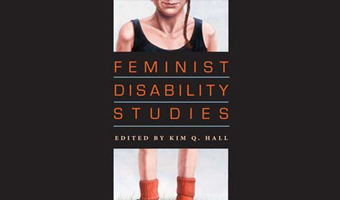By Anna Hamilton
One common complaint leveled at modern intersectional feminism—particularly academic feminism and Women’s Studies—is that feminism that doesn’t exclusively focus on issues of concern to white, middle class, straight and able-bodied women is “too divisive” and “distracts” from the issues on which “all feminists” can apparently agree. The latest iteration of this argument has come up in the controversy over British journalist and feminist Caitlin Moran’s support of American actress and writer Lena Dunham, which culminated in Moran’s rather spectacularly insensitive display of non-concern for women of color when asked on Twitter about Dunham’s HBO series Girls and media representation. While further commentary on this incident is beyond the scope of this review, Moran’s inability to look before she Tweets and the backlash spawned because of her blasé attitude toward women of color brings into stark relief why feminism needs to integrate perspectives other than those of women whom the popular feminist movement—and the mainstream media–has rewarded with book deals, high-profile commentary and blogging gigs, and “star” or expert status.
In this context, the anthology Feminist Disability Studies (Indiana University Press)–edited by Kim Q. Hall and bulked up by several of the luminaries of feminist disability theory—is a welcome intervention. Many of the names and pieces featured in this anthology will be familiar to those who are already well-versed in feminist disability theory; the contributions here from Rosemarie Garland-Thomson, Nirmala Erevelles and Abby Wilkerson set the foundation of feminist disability studies and of the anthology as a whole. There are some standout essays amongst more recent contributions as well, including Susannah Mintz’s piece on the work of memoirist Georgina Kleege, Sharon Lamp and W. Carol Cleigh’s challenging overview of past and present eugenicist strains in American feminism, and Jennifer James’s careful examination of the oeuvre of black novelist/poet Gwendolyn Brooks. Feminist Disability Studies is a particularly solid collection due to the wealth of cross-genre essays and contributions housed within its pages, and its contributors draw from women’s studies, literary and cultural studies, ethnic studies, philosophy, and many other disciplines.
The overall quality of this collection does not, however, mean that it is free of missteps; one piece of particular concern is April Herndon’s essay on fat embodiment and disability studies, in which she argues that fatness is disabling and should be covered under the ADA. While Herndon contends that any PWD resistance to fatness being categorized as a disability is “anti-fat,” I have to disagree; being disabled and being fat are not the same thing, nor are they always comparable as bodily experiences and therefore collapsible into a single identity, which is what Herndon seems to want to do in her piece. Many people with disabilities know that no two disabilities, chronic illnesses, or mental illnesses are exactly alike, and oftentimes comparing two conditions is not helpful; indeed, the experiences of two PWDs with the same condition may not even be remotely similar, depending upon a whole host of factors. Herndon rightly points out that fatness and disability do have many intersections, and there should be opportunities for exploring how this embodiment affects the bodies of people who are both fat and disabled–however, this does not mean that fatness is automatically a disability, or disabling, in all cases.
Many of the contributions to Feminist Disability Studies also emphasize visibility as something of a prerequisite to disability; this is most likely unintentional, but an absence of consideration of invisible disability—whether physical, mental, or neurological–also speaks volumes. There is one thoughtful and challenging piece in Feminist Disability Studies about mental illness, feminist theory and Jane Eyre (Elizabeth Donaldson’s “Revisiting the Corpus of the Madwoman”)–and while there could be an entire anthology on feminist perspectives on invisible illness and disability, one essay on mental illness doesn’t fill that gap. Given the intertwining of chronic pain and various chronic illnesses (many of which can be disabling) with gender politics and feminist issues, the overall lack of print space allotted to invisible and less-visible disability seems a rather odd oversight in an otherwise terrific collection.

